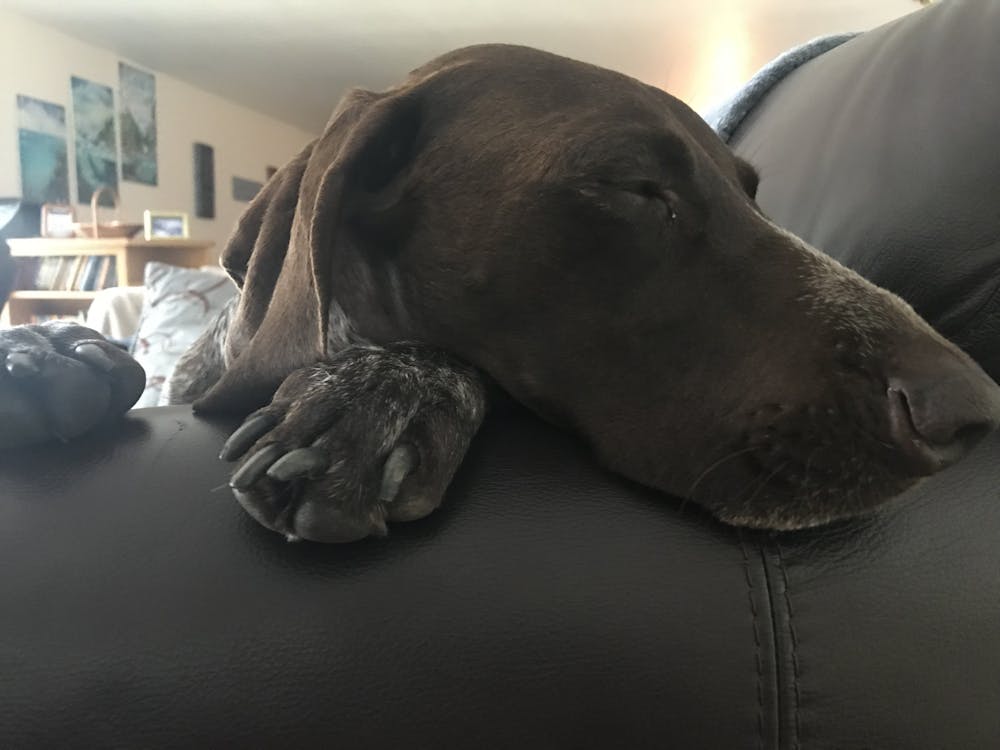June in Bellingham saw average high temperatures of 66 degrees. When temperatures spiked, reaching 99 degrees on June 28, Western Washington University students were left trying to keep their furry friends healthy in the heat.
Third-year Western student Cameron Evans and his dog Nova stayed inside to escape the heat.
“I felt like a hermit crab,” Evans said. “We [Nova and I] would look at each other and embrace the suck.”
Since Evans does not have air conditioning in his home, he found other creative ways to help cool himself and Nova down.
“I hung blankets and sheets over the windows,” Evans said. “I would then get T-shirts wet and put them in the fridge for an hour. After that, I would put one on Nova to help cool down.”
Air conditioning is hard to come by in Western Washington; only about 44% of Seattle homes have air conditioning according to the 2019 American Housing Survey. With the common absence of air conditioning and the potential for more hot weathered days, the continued question of how to keep pets cool remains.
“If owners do not have AC, easy ways to cool the pets down would be fans, cold water and wipe downs with wet towels,” said Washington State University veterinary student and licensed pet sitter, Audrey Kristofferson.
Kristofferson said it is a common misconception that it is helpful to feed dogs ice cubes to cool them down and that it actually does more harm than good. Kristofferson said the effort and energy it takes for the dog to eat the ice cube outweighs the hydration provided from the ice.
Additionally, Kristofferson said in extreme temperatures, going outdoors can be harmful to dogs.
“As it gets hotter, walks should become shorter,” Kristofferson said. “Long walks and exercise in high temperatures is the quickest way for an animal to get heatstroke.”
According to an article from Washington State University College of Veterinary Medicine, asphalt can become up to 50 degrees hotter than the surrounding air. This results in burns on dogs' paws in cases of prolonged exposure.
“Owners can prepare themselves by purchasing cooling pads, fans, and maintaining their dog’s coats,” Kristofferson said. “Doing daily brushing to remove excess hair will aid in cooling the dog down. Contact your groomer and they will help you make an educated decision.”
However, different dogs can handle different temperatures. Stacie Heiber, the owner of Traveling Paws Mobile Grooming, said breeds like pugs have a difficult time with heat due to their smaller air passages and cannot cool themselves as easily.
Heiber said proper grooming can also help keep dogs safe from overheating in the summer.
“It is important for dogs with double coats to be groomed in the spring to have their undercoat brushed and blown out,” Heiber said. “Dogs who have their undercoat shaved or haircuts are at risk of heatstroke due to not being able to regulate their temperature.”
Owners may also look for different ways to tire dogs out when going outside is not an option. While this can pose a challenge, Kristofferson named a few options that do not involve physical activity.
“Brain games are key when the weather is too hot to play outdoors,” Kristofferson said. “Mental stimulation, such as snuffle mats, toy finding games and more, are helpful for tiring out the mind of a dog.”
Justin Troia is a communication studies major and a reporter for The Front. He specializes in on-campus and student news. He can be reached at justintroia.thefront@gmail.com.





